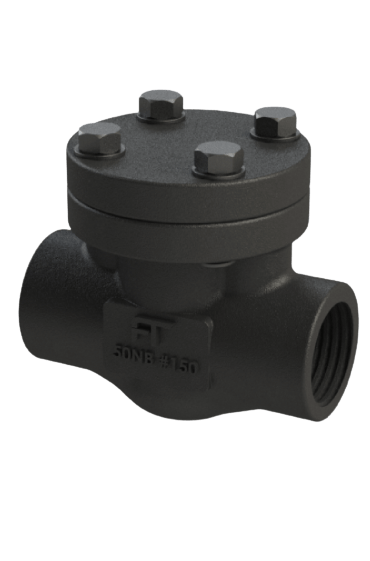Check valves play a crucial role in various industries, ensuring the seamless flow of liquids and gases while preventing backflow. These essential components are widely used in sectors such as oil & gas, water treatment, pharmaceuticals, and chemical processing. Their function is to allow media to flow in one direction and automatically close to prevent reverse flow, thereby maintaining system integrity and efficiency.
Types of Check Valves and Their Applications
Swing Check Valve – Commonly used in water and wastewater treatment, this valve allows fluid to pass through in one direction while a hinged disc prevents backflow.
Lift Check Valve – Suitable for high-pressure applications, this valve is typically found in steam and gas pipelines.
Dual Plate Check Valve – A compact and lightweight option, it is often used in oil & gas and HVAC systems due to its low-pressure drop.
Wafer Type Check Valve – Known for its space-saving design, this valve is widely utilized in chemical processing plants and industrial pipelines.
Factors to Consider When Choosing a Check Valve Manufacturer in India
Selecting a reliable check valve manufacturer in India is critical to ensuring high-quality and durable products. Consider the following factors:
Material Quality – The best manufacturers use premium materials such as stainless steel, cast iron, and alloy steel to enhance durability and corrosion resistance.
Industry Standards – Look for manufacturers that comply with international standards like API, ASME, ANSI, and ISO certifications.
Customization Options – Industries often require specific modifications in check valves, so manufacturers offering tailored solutions are preferred.
Customer Support and After-Sales Service – Reliable manufacturers provide strong technical support and maintenance services.
Why Indian Check Valve Manufacturers Are Becoming Global Leaders
India has emerged as a hub for industrial valve production due to cost-effectiveness, advanced technology adoption, and strict quality control measures. Indian manufacturers are known for their innovation and ability to meet global demands. With a strong export market, these manufacturers provide high-quality industrial check valves that comply with international standards.
For industries looking for reliable and durable solutions, partnering with a reputed check valve manufacturer in India ensures efficient system performance and longevity.












